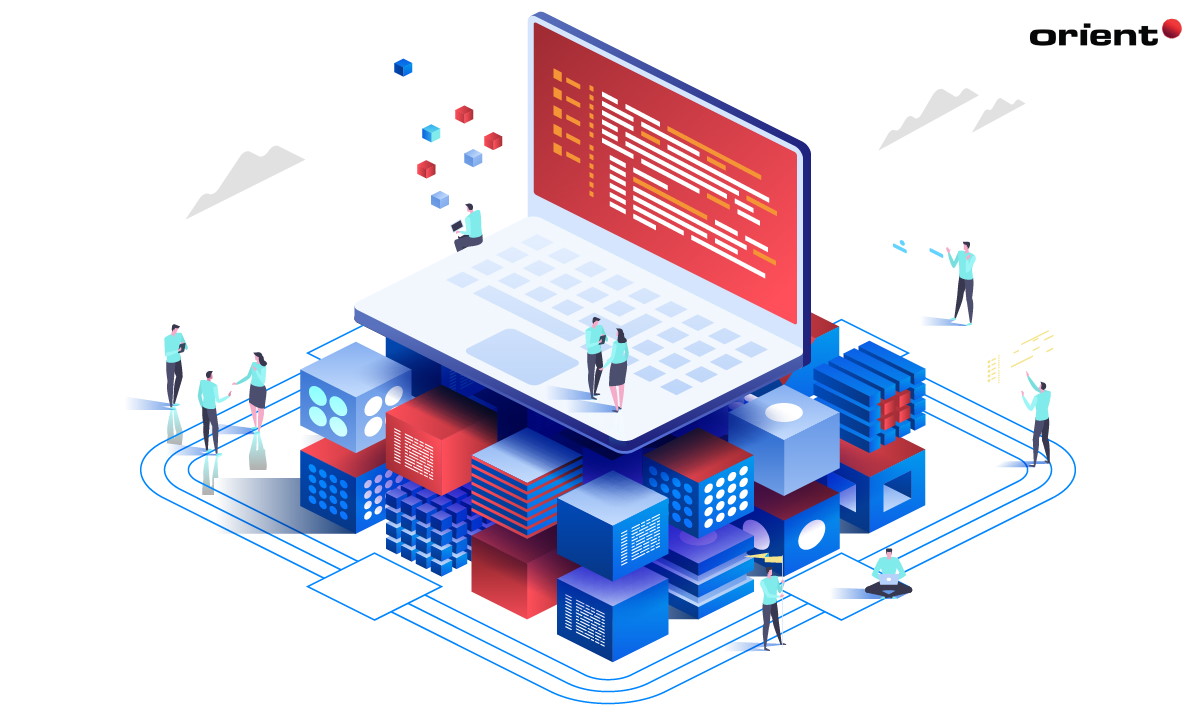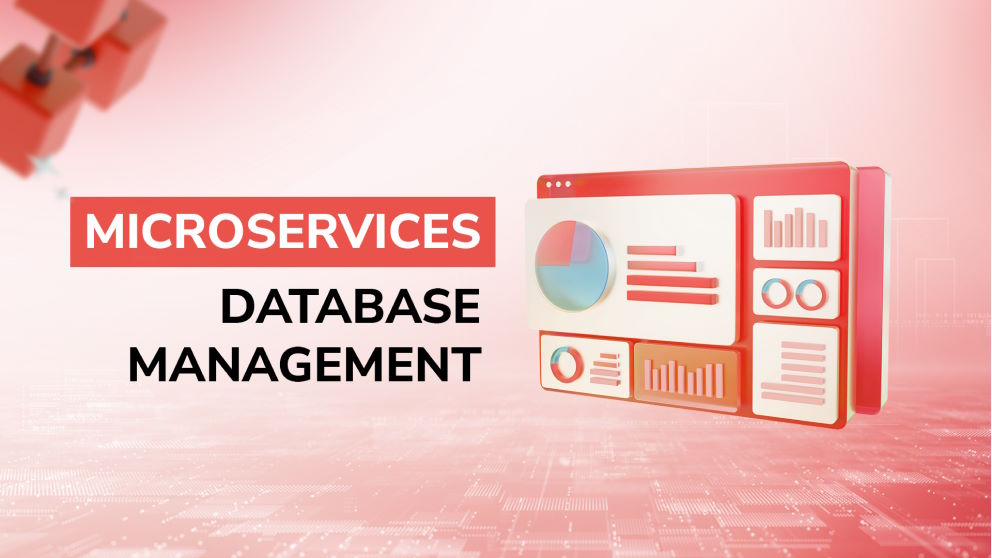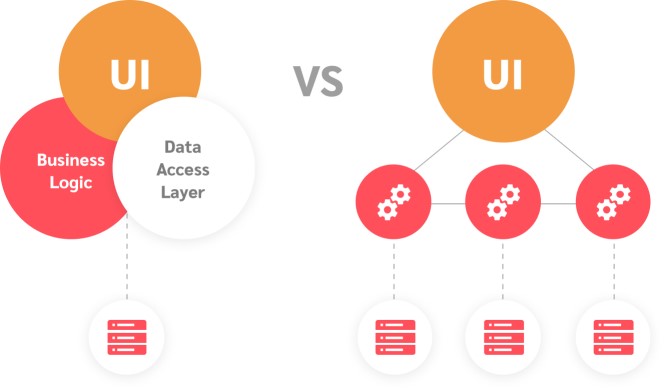Why Microservices Are Crucial in Scaling Up Your App

Content Map
More chaptersHow to deal with a giant project without getting overwhelmed? Break it into smaller steps, and have one team performing each step. Then, you have multiple parts of a workflow moving separately yet all working toward the same goal. The same logic goes for microservices.
What Are Microservices Architectures?
The word ‘service’ in microservices refers to the components of a software application. A large application is comprised of several of these independent ‘services’ - or microservices - each performing a unique business function, while still being connected to each other via a well-defined interface.
Brief History of Microservice Architecture
Before we had microservices, software was developed with a monolithic architecture. Developers designed, coded, tested, and deployed all components of an application together. While this approach still works well for smaller, simpler software, as applications get bigger and more complicated, the monolithic architecture does not suffice anymore.
The biggest problem of the monolithic architectural style is that it is inflexible: when everything is tied to a single codebase, so when a team needs to fix or add a new function, they have to tackle the entire application. This bears the risks of bugs, unnecessary labor, limited scalability, and higher costs.
Breaking apps into independent services, i.e. microservices architecture, is the solution software developers devised for this problem. The microservices architecture is the new approach to server-side development.
How Does a Microservice Architecture Work?
When your app is developed with a microservices architecture, multiple teams of developers work on different services in the app independently while still connected to the rest of the software development workflows.
How are the components in a monolithic application split into microservices? Based on business functions. For example, in an online shopping application, there can be a microservice dedicated to billing, shopping cart, user accounts, and push notifications. Each service is responsible for one single feature, loosely coupled so that they are connected but also run independently. Each service is also self-contained, so that when one needs modifications and testing, it would operate at a limited capacity, but the rest of the application remains unaffected.
How Are The Loosely Coupled Services Connected?
If the microservices are developed and maintained individually, how are they connected to make up the whole application? Via a well-defined interface. There are 3 ways microservices communicate with each other:
API calls: synchronously send HTTP requests and responses.
- Message brokers: asynchronously, via a message broker that forwards messages among the services.
- Service mesh: dedicated infrastructure layer that enables observable and structured communication across the services.
Made possible by the DevOps approach to software development, microservice is best for large-scale applications where dedicated engineering teams have the peace of mind to design, deploy, and scale autonomously, and fast.
The Benefits of Microservice Architecture
Using the metaphor at the start of this article, microservices are the steps being carried out concurrently, while still contributing to the bigger plan. It does sound productive, doesn’t it? There is more to it. Here are the 4 benefits of microservices:
- Scalability
- Flexibility
- Speed
- Diversity
Let’s get into the details below.
Microservices architecture enables scalability
This is the best result you can expect from microservices. You can fix, modify, or add a service without risking downtime on the entire app. This is crucial for up-and-running apps. There is less worry about the function under development causing inconveniences to users.
This benefit is invaluable when you have a sudden uptick in users and demands. You can also scale up one microservice and leave the others for later development. This may provide relief for your cash flow, allowing you to extend your runway.
Microservice architecture is also a great help when you want to expand or upgrade certain components of your app. Adding microservices is more straightforward because your developers do not have to tackle the entire app, as was the case with the monolithic architecture. This would allow you to respond flexibly to changing market needs and keep up with the competition, without risking your existing value.
Microservices architecture boosts flexibility
With a microservices architecture, you can have multiple software development teams work simultaneously, each executing a different chunk, while being synced with other teams on the cloud.
The teams can work from anywhere in the world, thus allowing seamless collaboration between your in-house developers and outsourcing partners, or a remote workforce.Moreover, your developers can use different programming languages to work together on the same app.
Microservices architecture improves speed in deployment
Your developers only need to focus on one specific function, being rest assured that it will sync with the rest of the app with secure APIs and cloud technologies. You can quickly respond to users’ changing needs and market trends by shortening development time and hastening the speed to market.
Each microservice can be independently deployed, giving development teams the peace of mind and confidence to deploy more often.
Individual services encourage more diverse development teams
Since each service is developed by a dedicated team, the team can decide the most suitable tech stack. The diversity of tech stack that goes into the development of one application helps you be open to a wide range of engineering talent and backgrounds, and improves your hiring efficiency.
Moreover, choosing outsourcing vendors to develop the service in question is easier, since you can set aside consistency requirements and just focus on finding developers with the best tech stack and most effective solution.
When Should You Use Microservice Architectures?
Thinking if you should upgrade your monolithic architecture into an architectural style of small independent services? Here are the instances when the microservices approach may work for you.
When you do not know the range of devices your application will support
Monolithic applications were best suited for when we only had desktops; but now, our devices have multiplied into mobile phones, laptops, wearables, and more. Hence, your application and developers have to be agnostic, which means, to be able to develop for a range of devices and platforms. Microservices architecture uses different code bases, allowing the services that run as independent processes.
Therefore, you should consider refactoring your software into microservices when your business is ready to serve a wide range and a large volume of digital users.
When you anticipate, or struggle to serve, an uptick in users
This is when you are living the dream of most companies: expanding business capabilities, finally hitting the targets you thought were too far off. However, your entire application is monolithic because it was the cheaper option back when you first started.
Using microservices can be a worthy investment, as deploying microservices promises to be easy and fast. When you want to scale one single service, other microservices will keep running as normal. Unlike monolithic applications, your entire system will not suffer downtime.
When you are comfortable with complex interactions between software components
Microservices bring application complexity to a new level. Each service uses a different tech stack, programming language, platform, and APIs, with different teams working simultaneously but independently on different components of your project. Therefore, you need to be thorough and organized to monitor microservices effectively.
Having a robust monitoring system pays off because when a service fails, you need to track down the issues. The problematic service will not be the only ongoing failure issue. To prepare for this, you need to have plan Bs and good load balancing.
Expand Your Business Capabilities with Microservices Architectures Now

It may seem the technological race is endless. You keep hearing of new technological advances every year, all of which promise great opportunities. Unlike artificial intelligence or blockchain, microservice is not a brand new thing - it is made possible by cloud computing and the rise of distributed systems. This means you can benefit from microservices right now, by working with the right software development teams. It is like adding a turbo engine to your technological capability - the speed and flexibility of microservices mean you may never want to look back.







